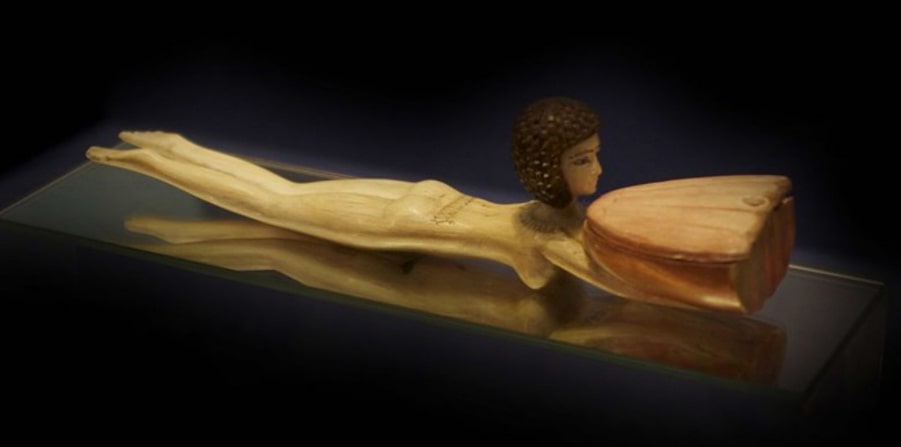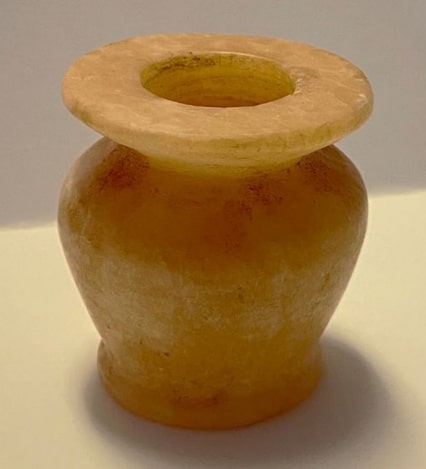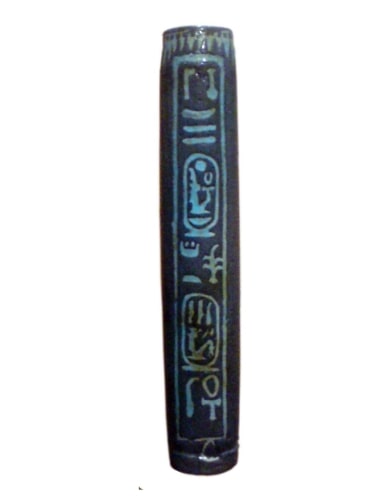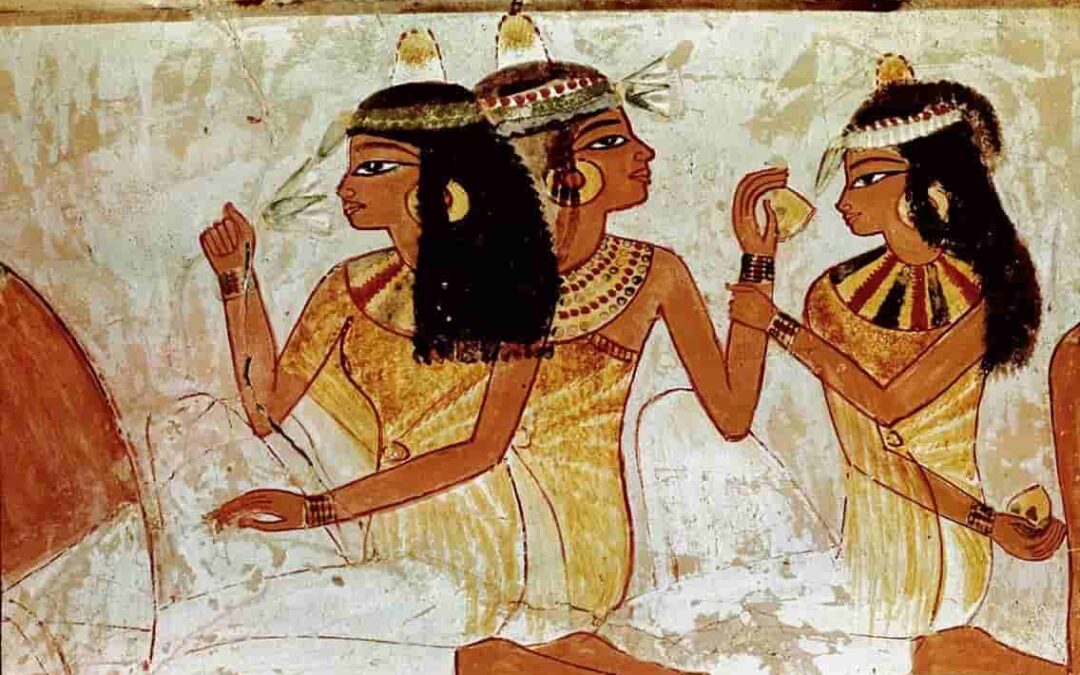In ancient Egypt, hygiene, body care, and the use of makeup were all extremely important. Everyone, regardless of gender, age, or social class, used makeup. However, the containers and applicators used for makeup often differed between social classes, with those in the upper classes often being luxurious items or jewelry.
Makeup served not only an aesthetic purpose, but also had protective and medicinal functions. In fact, cosmetic recipes can be found in documents such as the Hearst and Ebers papyri.
Scientists like Christian Amatore and Philippe Walter have studied the composition and effects of ancient Egyptian makeup and have found that it contained lead, which was previously thought to be toxic in cosmetics. Nitric oxide has also been detected in ancient Egyptian makeup, which can help boost the immune system and prevent eye infections.
This substance is not found naturally, so it is believed that it was synthesized for medicinal purposes after its healing properties were discovered through chance. Eye infections were common in areas like the Nile, so it makes sense that the ancient Egyptians would try to find ways to protect themselves.
Makeup also had a religious function, as palettes and traces of makeup pigments have often been found in grave goods. In particular, eye makeup was associated with the gods Horus and Ra and was believed to offer protection.
Both men and women in ancient Egypt used makeup, but it was more commonly used by the wealthy. Lower social classes often used kohl to outline and protect their eyes.
Women in particular used a full range of makeup. During the predynastic period, makeup was a part of everyday life, and palettes and traces of makeup have been found in graves, sometimes even hanging around the neck of the deceased.
During the pre-dynastic period and up until the 19th dynasty, a mixture of water, gum, and green malachite powder from Sinai called udju was used to apply makeup to the eyelids. This mixture gave a greenish hue similar to modern green eyeshadow. Sometimes azurite was used to create a blue color, or a mixture of both was used to create a deep green or turquoise.
Green was the most common color used in the Old Kingdom, and it was often used to draw a line around the eye with symbolic references to the god Horus. This makeup was mixed with animal and vegetable fat in makeup palettes, which can be seen in museums with ancient Egyptian collections.
Later, kohl was used to outline the eye, both on the upper and lower eyelids. In addition to giving the ancient Egyptian eye its characteristic shape, similar to the Eye of Horus, kohl also had antibacterial properties and protected against insects.
Kohl was made from stibnite or a mixture of galena, lead sulfide, and other substances such as antimony, caesurite, lauronite, and phosgenite. It was called mesdemet and was also used as mascara.
The minerals were ground on a paddle and mixed with soluble gum, then stored in small containers, usually cylindrical or jar-shaped, and applied with fine bone, wood, or ivory sticks. Black galena kohl is still used by Arab peoples today and is applied in the same way as it was in ancient times.
These small containers were made of different materials depending on the period. In the Old and Middle Kingdoms, glazed pottery and colored stone were used, and in the New Kingdom, alabaster, blue marble, faience, and glass were used.
Blush was created by mixing fucus algae or sea lettuce and iron oxide to create a beautiful reddish ocher color. These were mixed with fat or resin and stored in stone, earthenware, cane, or wooden jars, which were often decorated. Containers with compartments have been found to store different shades of pigments.
Lips were also made up using a mixture of iron oxide or hematite with the help of a brush. It was common to use henna to make up the nails, hands, and feet, and this pigment is still used today to decorate the body and dye the hair. The rest of the body was decorated with ocher and saffron. Ocher has been used for this purpose since prehistoric times.
There are four different representations of the use of cosmetics at different times in ancient Egypt:
- In the VI dynasty in Thebes, there is a representation of a seated woman looking in a mirror, possibly after putting on makeup.
- From the Middle Kingdom, there is a stele showing a woman named Ipwet applying makeup, possibly rouge.
- In a 19th dynasty erotic papyrus, a woman is shown painting her lips while looking in the mirror.
- In an ostracon from the Ramesside period in the Louvre Museum, a woman is shown nursing a child while her servant applies kohl and holds a mirror for her.
Makeup palettes were flat, made of stone, and had animal or geometric motifs with a cavity for mixing makeup. In conclusion, the ancient Egyptians were concerned with hygiene, health, and beauty and used a wide range of cosmetics and makeup that are still in use today, often with very similar ingredients. Body care and the pursuit of beauty are timeless themes.
Source: Marta Pérez Torres, egiptologia 20











